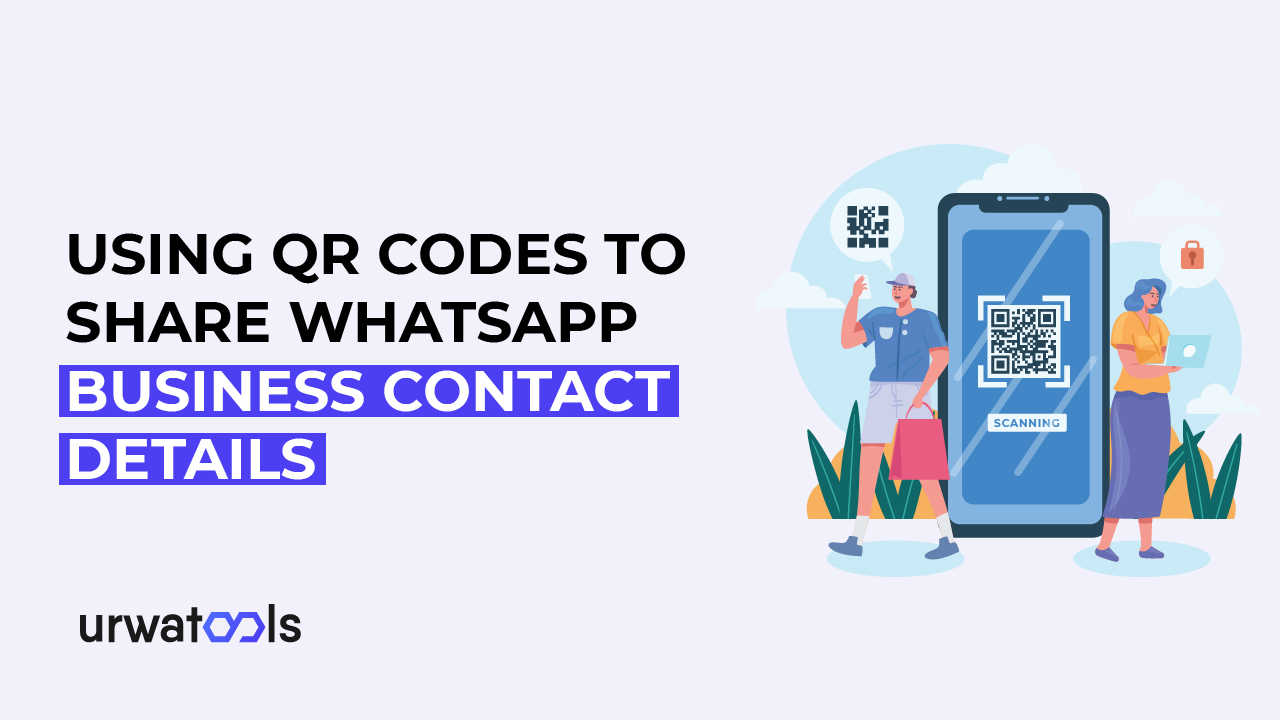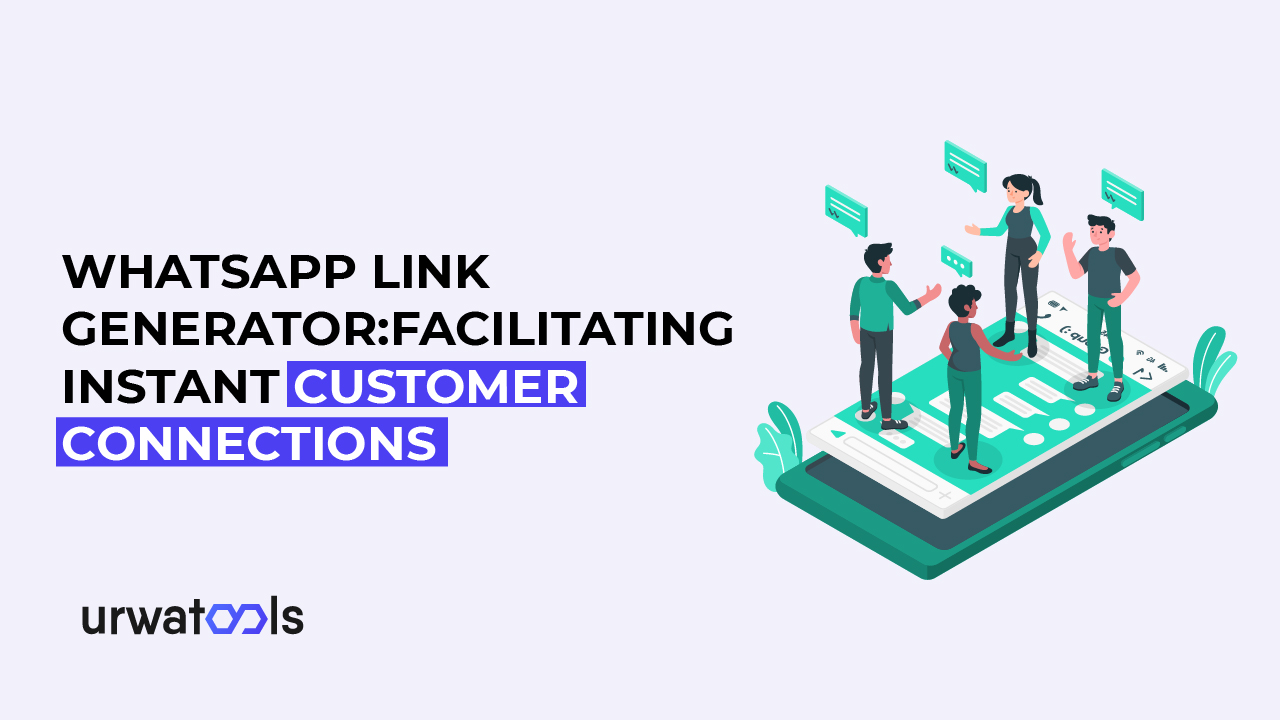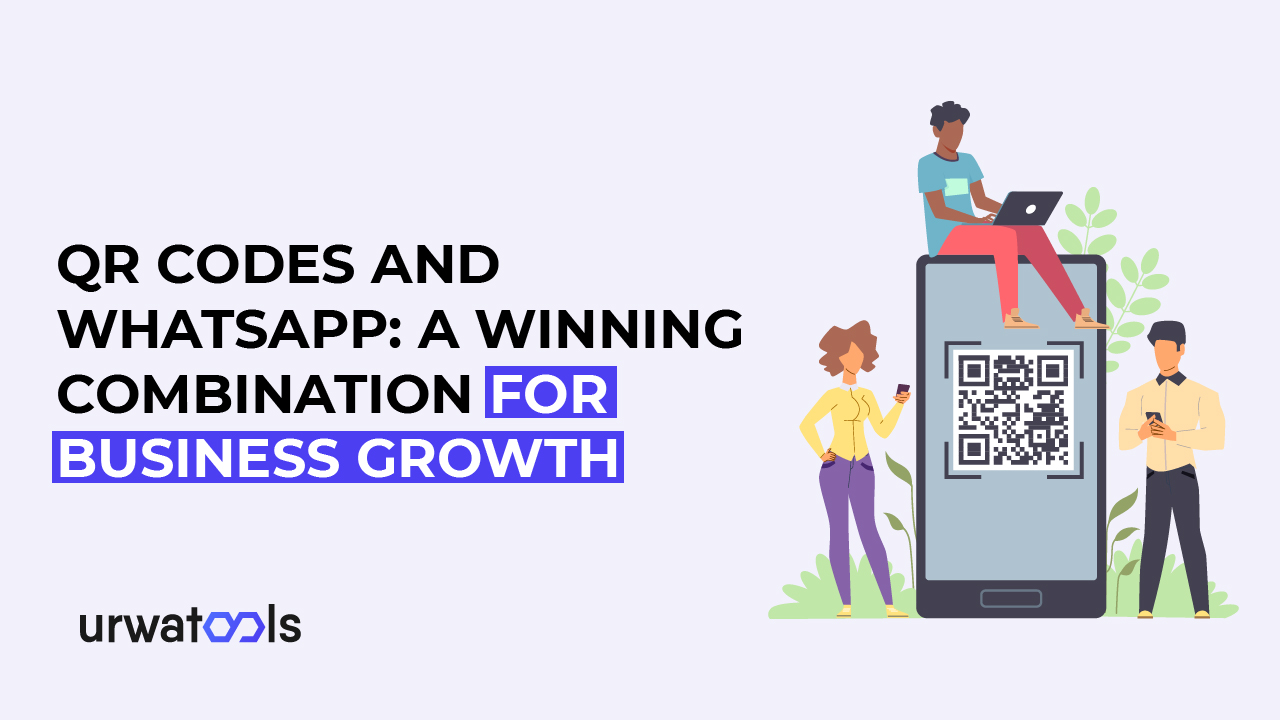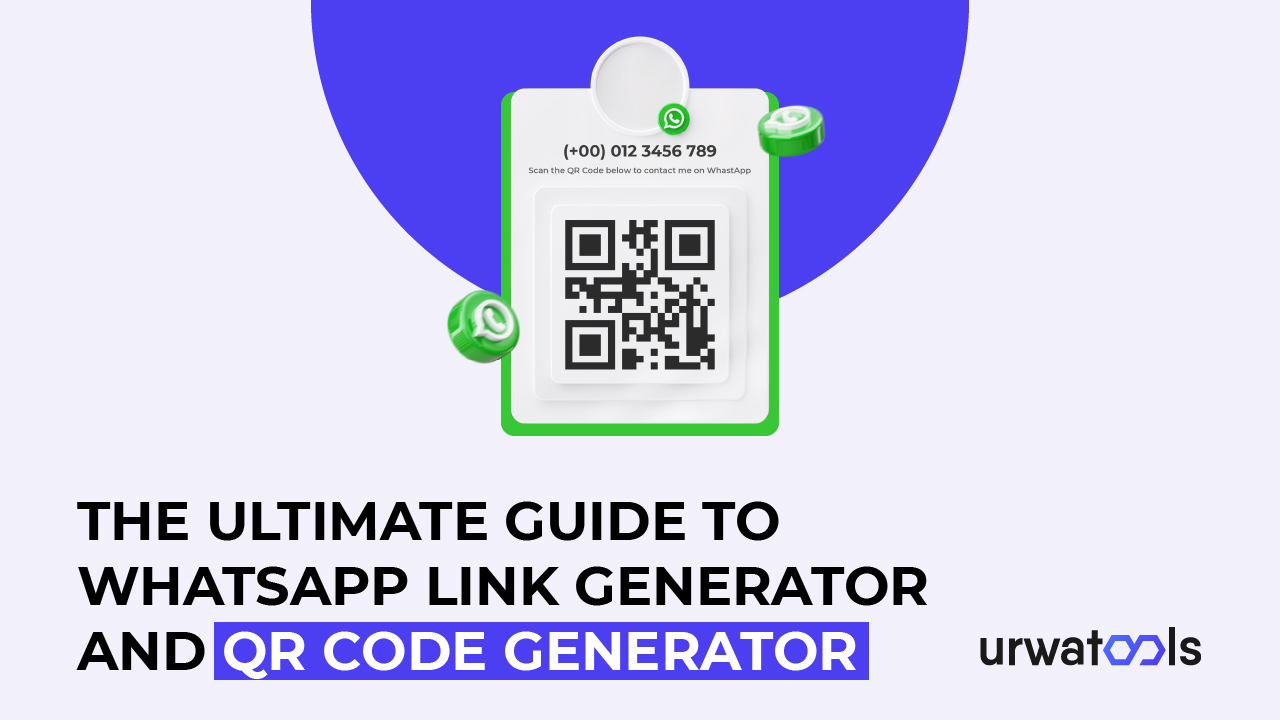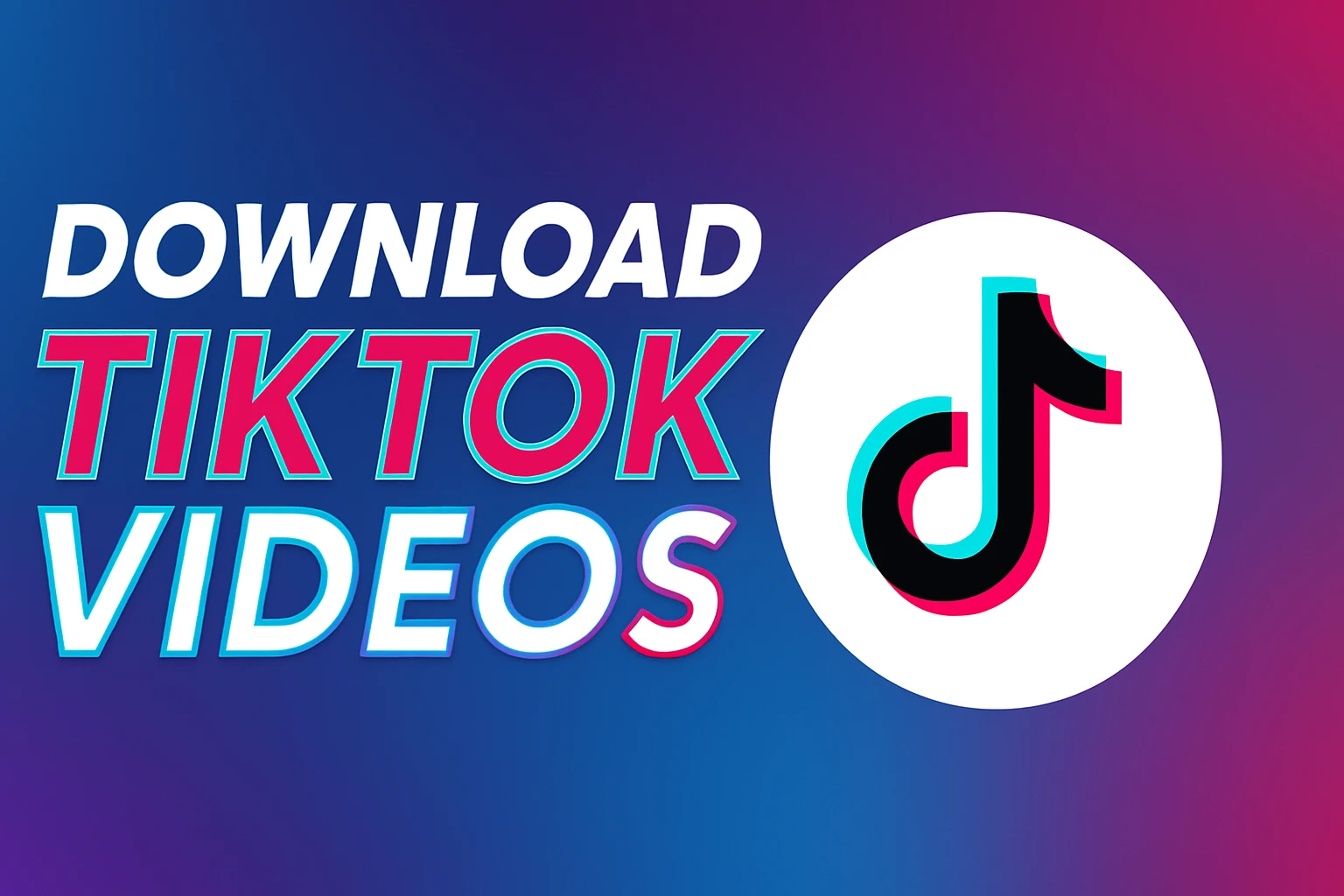WhatsApp Business İletişim Bilgilerini Paylaşmak için QR Kodlarını Kullanma
Dijital çağda işletmeler, tüketicileri ile daha etkili iletişim yöntemleri aramaktadır. WhatsApp şirket iletişim bilgilerini iletmek için QR kodları, popülerlik kazanmış böyle bir yoldur. QR kodları, kullanıcıyı belirli bir web sayfasına, iletişim bilgilerine veya diğer ilgili materyallere yönlendirmek için bir akıllı telefondaki kamera ile okunabilen iki boyutlu kodlardır.
QR kodları doğru kullanıldığında, işletmelerin hedef kitleleriyle iletişim kurmaları için sorunsuz ve anlaşılır bir yol sağlayabilir. Ayrıca doğrudan bir iletişim kanalı da kurabilirler. Bu makale, WhatsApp şirket iletişim bilgilerini göndermek için QR kodlarının avantajlarını inceleyecektir. Ayrıca, işletmelerin müşteri deneyimini iyileştirmek için bu teknolojiyi nasıl kullanabileceğine de bakacaktır.
1. Giriş
Firmalar, bu dijital çağda rekabette bir adım önde olmak için en son teknikleri kullanmalıdır. QR kodları, WhatsApp şirket verileri gibi iletişim bilgilerini iletmek için hızlı ve kolay bir yol sağlayarak müşteri katılımını kolaylaştırabilir. Şirketler, tüketici iletişimi ve pazarlama çabalarını artırmak için QR kodlarını ve WhatsApp şirketlerini kullanabilir.
2. QR kodlarını anlama
Hızlı Yanıt Kodları anlamına gelen QR kodları, beyaz bir zemin üzerinde siyah modüllerin kare şeklindeki barkodlarıdır. URL'ler, metin ve iletişim bilgileri dahil olmak üzere çeşitli veri türlerini tutabilirler. Mobil kamera ile bir QR kodunu taramak, cihazın belirli bir eylemi gerçekleştirmesine olanak tanır. Örneğin, bir web sayfasına erişiyorlar veya iletişim bilgilerini saklıyorlar. Basitlikleri ve kullanım kolaylıkları nedeniyle QR kodları, WhatsApp şirket iletişim bilgilerini dağıtmak için mükemmeldir.
3. WhatsApp İş Gücü
I. WhatsApp Business nedir:
Günümüzün dijital dünyasındaki işletmeler, tüketicileriyle iletişim kurmak ve sorunsuz iletişim deneyimleri sunmak için sürekli olarak yaratıcı yöntemler aramaktadır. WhatsApp Business, gelişen böyle yenilikçi bir üründür. WhatsApp Business, kullanıcı dostu tasarımı ve zengin yetenekleri nedeniyle şirketlerin hedef kitleleriyle etkileşim kurma biçiminde devrim yarattı.
II. Kolaylaştırılmış iletişim ve Müşteri Desteği:
WhatsApp Business, işletmelerin tüketicileriyle daha akıcı ve etkili bir şekilde etkileşim kurmasını sağlayan özel bir platformdur. Yazılım, işletmelerin tüketici sorgularını yönetmelerine ve hızlı yanıt vermelerine yardımcı olmak için iş profilleri, otomatik mesajlaşma, hızlı yanıtlar ve etiketler gibi özellikler içerir. Şirketler, doğrudan ve kişisel bir iletişim kanalını korumak için WhatsApp Business'ı kullanabilir ve bu da müşteri memnuniyetinin artmasını sağlar.
III. Güven ve Güvenilirlik İnşa Etmek:
WhatsApp Business'ta var olmak, şirkete güvenilirlik ve güvenilirlik sağlar. Müşteriler, bildikleri mesajlaşma uygulamaları aracılığıyla işletmelerle etkileşim kurmayı tercih ediyor ve WhatsApp, dünya çapında en yaygın kullanılan mesajlaşma platformlarından biri. Şirketler, WhatsApp Business'ı kullanarak kendilerini güvenilir ve erişilebilir kuruluşlar olarak tanımlayabilir, müşteri sadakatini ve marka itibarını artırabilir.
IV. Sorunsuz ürün ve hizmet güncellemeleri:
WhatsApp Business, işletmelerin ürün veya hizmet güncellemelerini tüketicilerle kolayca paylaşmasına olanak tanır. Şirketler, yaklaşan ürünleri, özel indirimleri veya önemli haberleri vurgulamak için durum güncellemelerini kullanabilir. Müşteriler bilgi sahibi ve ilgili kalabilir, satışları ve marka bilinirliğini artırabilir. WhatsApp Business'ın basitliği ve yakınlığı, onu zamanında güncellemeler göndermek için mükemmel bir araç haline getirir.
V. Kişiselleştirilmiş Pazarlama ve Hedefli Mesajlaşma:
WhatsApp Business, işletmelerin bireysel müşterilere veya belirli müşteri kategorilerine kişiselleştirilmiş mesajlar göndermesine olanak tanıyarak hedefli iletişim sağlar. Bu özelleştirilmiş strateji, firmaların hedef kitleleriyle daha yakın bağlar geliştirmelerine yardımcı olur. İşletmeler, tüketicilerin tercihlerini ve davranışlarını inceleyerek tüketicilerde yankı uyandıran özel pazarlama çabaları tasarlayabilir. Bu, dönüşüm oranlarının artmasına ve daha fazla müşteri katılımına neden olur.
VI. Şifreli ve Güvenli İletişim:
Günümüzün dijital dünyasında gizlilik ve güvenlik kritik öneme sahiptir. WhatsApp Business, ağ üzerinde gönderilen ve alınan tüm iletişimleri şifreleyerek kullanıcı gizliliğine öncelik verir. Bu şifreleme, göndericinin ve alıcının materyale erişmesini sağlayarak tüketicinin iş gizliliğine olan güvenini artırır. WhatsApp Business'ın güvenli yapısı, güvenli bir iletişim ortamına katkıda bulunur.
VII. Gelişmiş müşteri deneyimi:
İşletmeler, WhatsApp Business'ın yeteneklerini ve işlevlerini kullanarak müşteri deneyimini iyileştirebilir. Hızlı yanıtlar, kişiselleştirilmiş etkileşimler ve kolayca erişilebilen iletişim kanalları, olumlu ve tatmin edici bir müşteri deneyimi yaratır. WhatsApp Business, işletmelerin tüketici sorularına yanıt vermesine, yardımcı olmasına ve uzun vadeli bağlantılar kurmasına olanak tanıyarak müşteri sadakatini ve savunuculuğunu artırır.
VIII. Diğer İşletme Araçları ile Entegrasyon:
WhatsApp Business, çeşitli iş araçları ve platformlarıyla etkili bir şekilde bağlantı kurarak onu işletmeler için değerli bir araç haline getirir. CRM sistemleri, chatbot platformları ve e-ticaret platformları ile entegrasyon, tüketici etkileşiminin verimliliğini ve etkinliğini artırır. İşletmeler bu bağlayıcılardan yararlanarak operasyonları otomatikleştirebilir, müşteri etkileşimlerini izleyebilir ve tüketici davranışına ilişkin önemli bilgiler edinebilir.
4. İletişim Bilgilerini Paylaşmak için QR Kodlarının Faydaları
QR kodları, iletişim bilgilerini iletmenin hızlı ve kolay bir yolu olarak son yıllarda popüler hale geldi. Bu matris barkodlar bir akıllı telefon kamerasıyla okunabilir ve kullanıcıları belirli ayrıntılara veya eylemlere yönlendirebilir.
I. Erişim kolaylığı:
Kişi paylaşımı için QR kodlarının temel faydalarından biri kullanım kolaylığıdır. Kullanıcılar, iletişim bilgilerini manuel olarak girmek yerine kodu akıllı telefonlarının kamerasıyla tarayabilir. Kolay erişim, veri yazma veya kaydetme ihtiyacını ortadan kaldırarak prosedürü hızlı ve kolay hale getirir.
II. Zaman Tasarrufu:
QR kodları, kişiyi paylaşan kişiye ve alıcıya çok zaman kazandırır. Kullanıcılar, iletişim bilgilerini vermek yerine QR kodunu tarayabilir ve paylaşılan verileri anında elde edebilir. QR kodu, zaman kısıtlı ağ oluşturma etkinliklerinde, iş toplantılarında veya sosyal toplantılarda yardımcı olur.
III. Hata azaltma ve doğruluk:
İletişim bilgilerinin manuel olarak girilmesi hatalara veya yanlışlıklara neden olabilir. Veriler hemen kodun içinde yer aldığından, QR kodları yanlışlık risklerini önemli ölçüde azaltır. Hata azaltma, iletişim bilgilerinin doğruluğunu ve bütünlüğünü korur.
IV. Çok Yönlülük ve Esneklik:
Telefon numaraları, e-posta adresleri, web siteleri, sosyal medya hesapları ve diğer iletişim bilgileri QR kodlarında saklanabilir. Bu esneklik nedeniyle, kullanıcılar çeşitli iletişim kanallarını tek bir prensipte paylaşabilir ve alıcıların seçtikleri şekilde bağlanmasına olanak tanır.
V. Dijital Platformlarla Sorunsuz Entegrasyon:
QR kodları, dijital platformlarla sorunsuz bir şekilde arayüz oluşturur. Dijital medya ile entegrasyon, alıcıların iletişim bilgilerini hemen dijital adres defterlerine veya CRM sistemlerine kaydetmelerine veya içe aktarmalarına olanak tanır. Entegrasyon, insan veri girişini ortadan kaldırarak zamandan tasarruf sağlar ve doğruluğu sağlar.
VI. Markalaşma Fırsatlarının Geliştirilmesi:
QR kodları, şirket logoları, renkler veya desenler gibi marka özelliklerini içerecek şekilde özelleştirilebilir. Bu markalaşma fırsatı, şirketlerin iletişim bilgilerini değiş tokuş ederken bile görsel kimliklerini korumalarına olanak tanır. Marka bilinirliğini güçlendiren profesyonel ve tutarlı bir izlenim verir.
VII. Uygun maliyetli çözüm:
Kişi paylaşımı için QR kodları, işletmeler ve bireyler için düşük maliyetli bir alternatiftir. Standart baskı işlemleriyle karşılaştırıldığında, kartvizitlere, promosyon malzemelerine veya dijital platformlara QR kodları koymak mütevazı harcamalar gerektirir. Güncel ve teknoloji meraklısı bir imajı korurken iletişim bilgilerini iletmek için düşük maliyetli bir çözümdür.
VIII. Analitik ve İzlenebilirlik:
QR kodlarının bir diğer avantajı da kullanımlarını izleme ve analiz etme yeteneğidir. İşletmeler, tarama sayısını, katılımı ve iletişim paylaşımı etkinliklerinin etkinliğini ölçebilir. Bu bilgiler, pazarlama taktiklerinin ve gelecekteki kampanyaların geliştirilmesine yardımcı olur.
IX. Çevre dostu seçenek:
QR kodları, kağıt ve baskı malzemelerini en aza indirerek çevre dostu uygulamalara katkıda bulunur. İletişim bilgilerinin birçok kopyasını yazdırmak yerine, tek bir QR kodu dijital olarak değiş tokuş edilebilir, bu da israfı azaltır ve sürdürülebilirliği artırır.
5. WhatsApp Business İletişim Bilgileri için QR Kodları Nasıl Oluşturulur?
WhatsApp Business iletişim bilgileri için QR kodları oluşturmak isteyen işletmeler şu adımları izleyebilir:
1. Bir QR kod üreteci kullanın: QR kodları, çeşitli internet araçları ve programları kullanılarak ücretsiz olarak oluşturulabilir. Bu platformlar, şirket markasına uyacak şekilde bir logo ekleme veya renkleri değiştirme gibi özelleştirmelere izin verir.
2. İletişim bilgilerinizi belirleyin: QR koduna eklenecek iletişim bilgilerini seçin. Bir WhatsApp işletme numarası, önceden yazılmış bir mesaj veya bir WhatsApp sohbet bağlantısı eklenebilir.
3. QR kodunu oluşturun ve kaydedin: QR kodu, temel bilgiler girildikten sonra oluşturulabilir. QR kod görüntüsünü pazarlama materyallerinde kullanmak için uygun bir formatta (ör. PNG, JPEG) indirin.
6. İş İletişimi için QR Kodlarını Kullanmanın Yaratıcı Yolları
QR kodları, ticari iletişim için uyarlanabilir varlıklar haline gelmek için iletişim bilgilerini iletmek için araçlar olarak geleneksel rollerinin ötesine geçti. Bu matris barkodlar, müşterilerle etkileşim kurmak, pazarlama kampanyalarını iyileştirmek ve şirket operasyonlarını hızlandırmak için yeni şekillerde kullanılabilir. Bu gönderi, verimli kurumsal iletişim için QR kodlarını kullanmanın çeşitli yenilikçi yöntemlerine bakacaktır.
I. İnteraktif ürün paketleme:
Etkileşimli deneyimler sağlamak için QR kodları ürün ambalajına dahil edilebilir. Müşteriler, kodu tarayarak ekstra ürün bilgileri, video demoları veya kullanım kılavuzları elde edebilir. Ürün ambalajı, ürün deneyimini geliştirir ve tüketicilere ilgili kaynakları sunarak memnuniyetlerini ve katılımlarını artırır.
II. Dijital Menüler ve Sipariş:
Restoranlar ve kafeler, dijital menüler ve temassız sipariş deneyimleri sağlamak için QR kodlarını kullanabilir. Müşteriler, menüye erişmek, seçim yapmak ve sipariş vermek için masalarındaki kodu taramak için cep telefonlarını kullanabilirler. Dijital menüler zamandan tasarruf sağlar ve fiziksel teması azaltır, bu da onları pandemi sonrası bir toplumda mükemmel bir seçenek haline getirir.
III. Özel Teklifler ve İndirimler:
QR kodları, olağanüstü fırsatlar ve tasarruflar sağlayabilir. Müşteriler, kodu tarayarak özel fırsatlara, sadakat ödüllerine ve sınırlı süreli tasarruflara erişebilir. Özel teklifler, satın almayı teşvik eder ve ayrıcalık ve aciliyet duygusu sağlayarak tüketici katılımını ve satışları artırır.
IV. Müşteri Geri Bildirimleri ve Anketler:
QR kodları, müşteri geri bildirimi toplamak ve anketler yapmak için kullanılabilir. Müşteriler, kodu tarayarak ve yorum, fikir veya derecelendirme sağlayarak bir ankete veya geri bildirim formuna erişebilir. Bu yararlı bilgiler, malları, hizmetleri ve tüm tüketici deneyimini geliştirmek için kullanılabilir.
V. Etkinlikler için Kayıt ve Biletleme:
QR kodları, etkinlik kaydını ve biletlemeyi kolaylaştırır. Katılımcılar bir etkinliğe kaydolmak, bilet satın almak veya etkinlik bilgilerini görüntülemek için kodu tarayabilir. Kayıt, kağıt bilet ve manuel kayıt ihtiyacını ortadan kaldırarak zamandan tasarruf sağlar ve etkinlik deneyimini iyileştirir.
VI. İnteraktif reklamlar ve tabelalar:
QR kodları, etkileşimli materyaller sağlayabilir ve müşterileri pazarlama ve işaretlere dahil ederek onların ilgisini çekebilir. Müşteriler, kodu tarayarak daha fazla bilgiye erişebilir, filmleri izleyebilir veya etkileşimli kampanyalara katılabilir. İnteraktif reklam, sürükleyici bir deneyim sunar ve insanları markayla aktif olarak etkileşime girmeye teşvik eder.
VII. Elektronik Kartvizitler:
QR kodları, kartvizitlere çağdaş bir hava katmanın mükemmel bir yoludur. Profesyoneller, kartvizitlerine bir QR kodu ekleyerek alıcılara iletişim bilgilerine, portföylerine veya web sitelerine hızlı erişim sunabilir. Kartvizit zaman kazandırır ve verileri manuel olarak girme ihtiyacını ortadan kaldırır.
VIII. Artırılmış gerçeklik (AR) deneyimleri:
QR kodları, sürükleyici deneyimler oluşturmak için artırılmış gerçeklik (AR) ile birlikte kullanılabilir. Kodu taramak, sanal ürün tanıtımı, etkileşimli oyun veya 3D görselleştirme gibi bir artırılmış gerçeklik deneyimi başlatabilir - genişletilmiş gerçeklik, unutulmaz karşılaşmalar ve artan marka katılımı ile sonuçlanır.
IX. Geri Bildirim ve Destek Kanalları:
QR kodları stratejik olarak yerleştirilerek müşteriler geri bildirim ve destek kanallarına yönlendirilebilir. Müşteriler kodu tarayarak sohbet platformlarına, bilgi tabanlarına ve müşteri hizmetleri web sitelerine erişebilir. Geri bildirim desteği, müşteri destek operasyonlarını kolaylaştırırken hızlı yardım sağlar.
7. Pazarlama Kampanyalarında QR Kodlarını Uygulamak için En İyi Uygulamalar
İşletmeler, pazarlama kampanyalarında QR kodlarını uygularken aşağıdaki en iyi uygulamaları göz önünde bulundurmalıdır:
1. Harekete Geçirici Mesajı Temizleyin: QR koduyla birlikte, kullanıcıları kodu nasıl tarayacakları ve taramadan sonra ne bekleyebilecekleri konusunda yönlendiren açık ve anlaşılır bir harekete geçirici mesaj ekleyin.
2. Mobil Optimizasyon: QR kodu aracılığıyla erişilebilen açılış sayfasının veya WhatsApp görüşmesinin mobil uyumlu olduğundan emin olun. Duyarlı tasarım ve kullanımı kolay bir arayüz, tüketici deneyimini geliştirecektir.
3. Test ve Kalite Kontrol: Bir QR kod kampanyasına başlamadan önce, çalışmasını ve okunabilirliğini doğrulamak için kodu çeşitli cihazlarda ve tarama programlarında test edin.
4. Avantajları Teşvik Edin: Özel indirimler, müşteri hizmetleri veya ilgili bilgilere erişim gibi QR kodunu taramanın avantajlarını iletin.
8. Başarıyı Ölçme: QR Kod Performansını İzleme
İşletmeler, QR kod kampanyalarının başarısını analiz etmek için çeşitli izleme yöntemlerinden yararlanabilir:
1. Analiz Araçları: QR kod kampanyalarından taramaları, tüketici demografisini ve etkileşim verilerini ölçmek için analiz araçlarını kullanın.
2. Farklı kimlikler oluşturun: Her pazarlama kanalı veya kampanya için benzersiz kimliklere sahip QR kodları oluşturun. İşletmeler daha sonra her bir kodun performansını belirleyebilir ve gelecekteki çabaları uygun şekilde uyarlayabilir.
3. Müşteri Geri Bildirimi: QR kodunu taradıktan sonra, müşterileri geri bildirim göndermeye veya anketleri doldurmaya teşvik edin. Bu kullanıcı girişi, gelecekteki kampanyaları ve tüketici deneyimlerini iyileştirmek için kullanılabilir.
9. Müşteri Deneyimini İyileştirmek için WhatsApp Business ile QR Kodlarını Kullanma
İşletmeler, QR kodlarını WhatsApp Business ile entegre ederek tüketici deneyimini iyileştirebilir:
9.1 Hızlı Müşteri Desteği: QR kodları, müşterileri bir WhatsApp sohbetine yönlendirerek hızlı yardım başlatmalarına ve almalarına olanak tanır.
9.2 Kişiselleştirilmiş İletişim: İşletmeler, müşteri verilerini veya tercihlerini kaydetmek için QR kodları kullanarak iletişimlerini kişiselleştirebilir ve hedefli teklifler veya öneriler sunabilir.
9.3 Etkileşimli Pazarlama Kampanyaları: QR kodları, müşterilerin katılmak veya avantajlar elde etmek için kodu taradığı yarışmalar, eşantiyonlar veya sadakat programları gibi etkileşimli pazarlama kampanyalarında yardımcı olur.
10. Vaka Çalışmaları: İş İletişiminde QR Kodlarının Başarılı Bir Şekilde Uygulanması
QR kodları, birçok şirketin iletişim stratejilerini geliştirmesine yardımcı oldu. İşte dikkate değer iki örnek.
1. Perakende Giyim Markası: Bir giyim markası, ürün etiketlerine QR kodları basar. Müşteriler, daha fazla ürün bilgisi ve boyutlandırma kılavuzu almak için kodu tarayabilir ve WhatsApp üzerinden ödeme yapabilir.
2. Restoran Zinciri: Bir restoran zinciri, menülerine QR kodları koyarak tüketicilerin WhatsApp aracılığıyla elektronik olarak taramasına ve sipariş vermesine olanak tanır. QR kodu, sipariş prosedürünü basitleştirdi ve bekleme sürelerini azalttı.
11. Potansiyel Zorluklar ve Çözümler
WhatsApp şirket iletişim bilgilerini paylaşmak için QR kodlarını kullanmanın çeşitli avantajları olsa da, firmalar belirli engellerle karşılaşabilir. Aşağıda, olası sorunlara ve çözümlere ilişkin bazı örnekler verilmiştir:
1. Düşük QR Kodu Farkındalığı: Bazı müşteriler QR kodlarına aşina olmayabilir veya bunları taramakta zorluk çekebilir. İşletmeler, kodun yanında temel talimatlar yayınlayabilir veya yardım isteyen tüketicilere yardımcı olabilir.
2. Teknik Sorunlar: QR kodları yalnızca doğru şekilde oluşturulmuşsa veya açılış sayfası veya sohbet bağlantısı doğru şekilde yapılandırılmışsa çalışabilir. Test ve kalite güvencesi, teknik zorlukların belirlenmesine ve çözülmesine yardımcı olabilir.
12. Güvenlik ve Gizlilik Hususları
İşletmeler, QR kodlarını kullanırken ve WhatsApp iletişim bilgilerini sağlarken güvenlik ve gizliliğe öncelik vermelidir. İşte düşünmeniz gereken bazı şeyler.
1. Veri Koruması: QR kodları kullanılarak toplanan veya paylaşılan bilgilerin veri koruma kurallarına uygun olduğundan emin olun. Tüketici yetkilendirmesi alın ve güvenli veri depolama uygulamalarını uygulayın.
2. Dolandırıcılıkla Mücadele Prosedürleri: Dolandırıcılık veya kimlik avı çabalarından kaçınmak için müşterileri güvenilir kaynaklardan QR kodlarını tarama ve iki faktörlü kimlik doğrulama gibi güvenlik önlemleri alma konusunda eğitin.
13. Gelecekteki Eğilimler ve Gelişmeler
QR kodlarının teknoloji ilerledikçe gelişmesi ve daha da fazla iş fırsatı sağlaması bekleniyor. Gelecekteki trendler ve gelişmeler şunları içerir:
1. Artırılmış Gerçeklik Entegrasyonu: Sanal ürün demoları veya etkileşimli promosyonlar gibi sürükleyici deneyimler sunmak için QR kodları ve artırılmış gerçeklik (AR) birleştirilebilir.
2. Dinamik QR Kodları: Dinamik QR kodları gerçek zamanlı olarak değiştirilebilir ve şirketlerin kodu yeniden yazdırmadan veya yeniden oluşturmadan içeriği veya hedef URL'yi değiştirmesine olanak tanır.
14. Son Sözler
QR kodları, şirketlerin WhatsApp iletişim bilgilerini hızlı bir şekilde dağıtmasına ve müşteri bağlantılarını geliştirmesine olanak tanır. İşletmeler, WhatsApp Business ile QR kodlarından yararlanarak iletişim alışverişini hızlandırabilir, pazarlama çabalarını artırabilir ve kişiselleştirilmiş bir müşteri deneyimi sağlayabilir. Kuruluşlar dijital dünyaya uyum sağlarken, iletişim stratejilerinde QR kodlarını kullanmak, bağlantıda kalmalarına ve hedef kitleleriyle başarılı bir şekilde etkileşim kurmalarına yardımcı olabilir.

